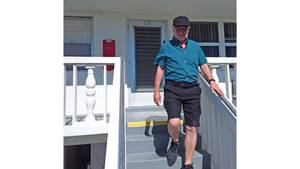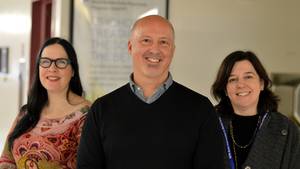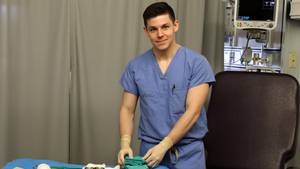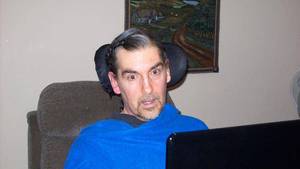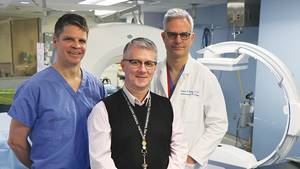We've all been there - sitting in the emergency department with fellow citizenswho've arrived with a wide range of health issues and concerns. As patient names are called, you hope yours is next. All of a sudden, someone is rushed in, disappearing behind the sliding doors and it seems like you’re in for an even longer wait.
It’s no surprise that wait times are one part of a complex system for any healthcare organization. A popular myth is that overcrowding has to do with patients coming to the Emergency Department (ED) when they could go elsewhere for care. The truth is that patients arrive at the ED for non-emergency complaints every day, however these people aren’t impacting wait times for more severe situations because they aren’t competing for the same resources. When there are large numbers of non-emergency patients, they can crowd the waiting room, but this not the case for the treatment area.
The QEII's Charles V. Keating Emergency and Trauma Centre deals with situations like this every day. This state-of-the-art facility is designed to meet the community’s unscheduled healthcare needs -- from the relatively minor to life-threatening conditions. It takes care of our community every day, most times without any warning at all.
So how do we plan every day for the unknown?
It is complicated, but we do our best to optimize space and resources. The ED has introduced a chair-centric pod for patients that do not require a bed, as well as a paramedic-assisted pod where doctors determine the care that’s needed and paramedics provide the resources. This enables us to provide more non-emergency patients with the care they need while assigning other major resources to the most critical cases.
The Rapid Assessment Unit is an environment outside the ED solely for consultations, assessment and treatments. Having this area frees up ED beds for patients waiting who require a doctor.
As our approach to healthcare continues to improve, the complexity of illness has also increased because people are living longer. This has resulted in more patients than beds. Up to 20 per cent of hospital beds are occupied by patients who are not actively sick, but can’t go home because they don’t have the right support. This congestion throughout the QEII means the patients waiting in ED beds to be admitted to the health centre are using beds that are needed to treat patients in the waiting room.
Since opening the new Charles V. Keating Emergency and Trauma Centre in 2009, thanks to funding from the QEII Foundation and the Nova Scotia government, great effort has been put into reducing wait times and we continue to make positive changes to our space and practices as patient needs change.
The efficiency of our QEII system is greatly dependent on the flow within all parts of the hospital and community, and we are working together to provide better and timelier care. So the next time you find yourself counting the specks in the waiting room ceiling tiles, remember that we are working with the unknown and doing our best to get you out of the emergency department and back to your regular life.

